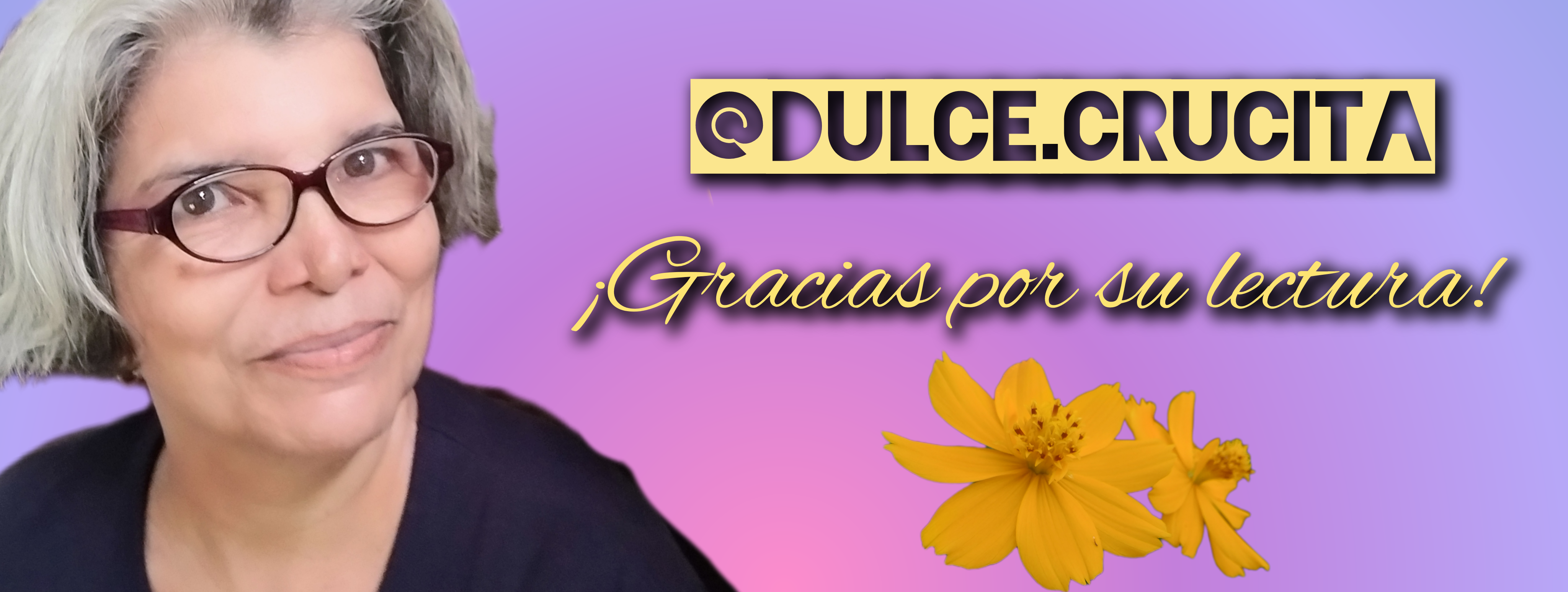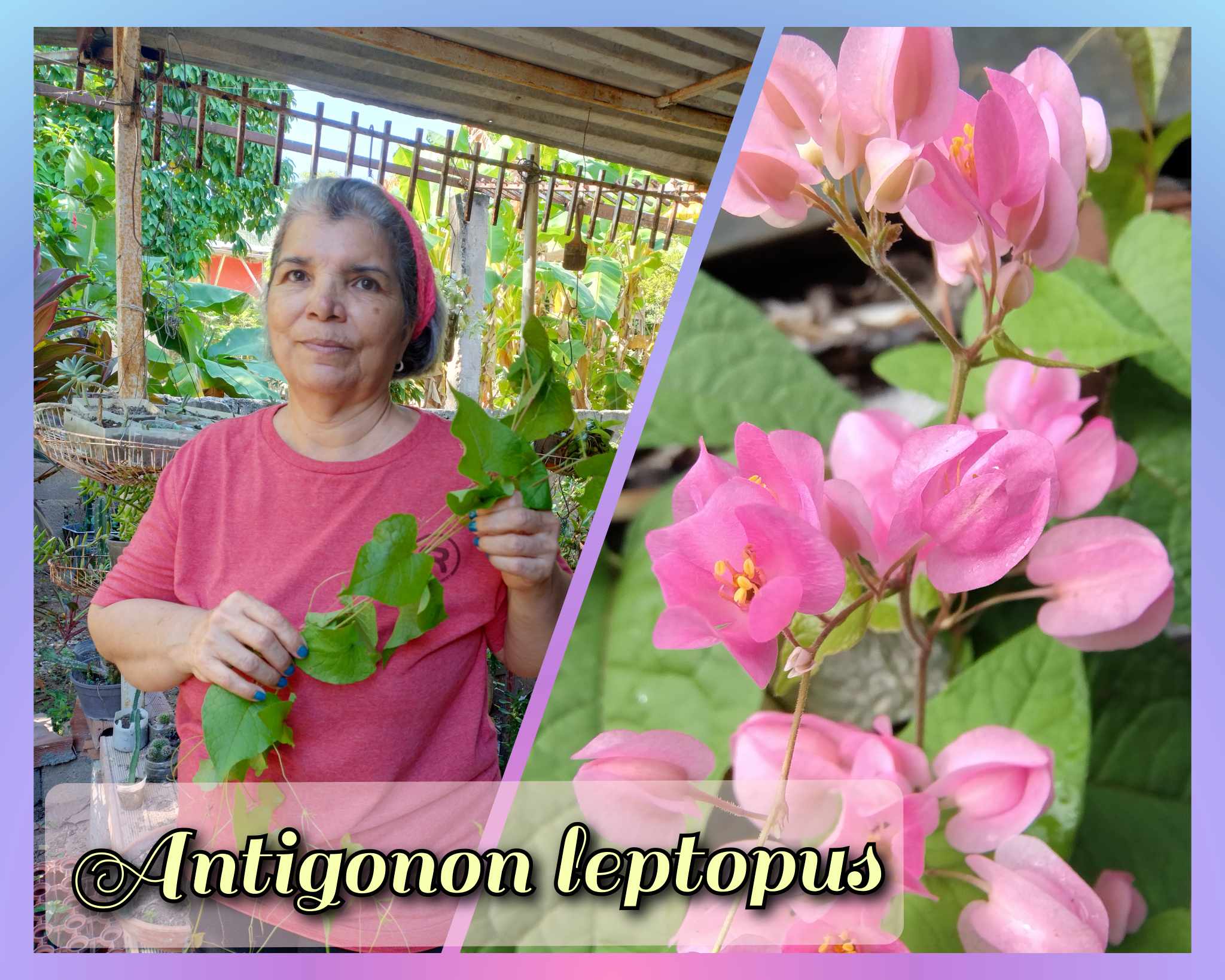
Retomando las publicaciones de las malas hierbas de mi jardín, la siguiente es una de las más bonitas y también de las más difíciles de controlar. Cuando mis hijos eran pequeños y aún no habíamos construido la casa, todo el terrero estaba cubierto de estas enredaderas floridas, la verdad se veía realmente bonito y mis hijos se metían a jugar en ellas sin preocuparse por los insectos (claro, la que se preocupaba era yo) y se hacían coronas de flores con ella.

Nunca supe el nombre de esta planta (hasta ahora), simplemente la llamábamos "Campanita". Según encontré es originaria de México y Centro América, aunque yo la veo perfectamente adaptada a mi localidad, y en México la conocen por varios nombres como por ejemplo "San Miguelito" y "Enredadera de San Diego", aunque también la conocen con nombres más bonitos como "Coral", "Rosa de Mayo" y "Corona de la Reina". Su verdadero nombre es Antigonon leptopus.
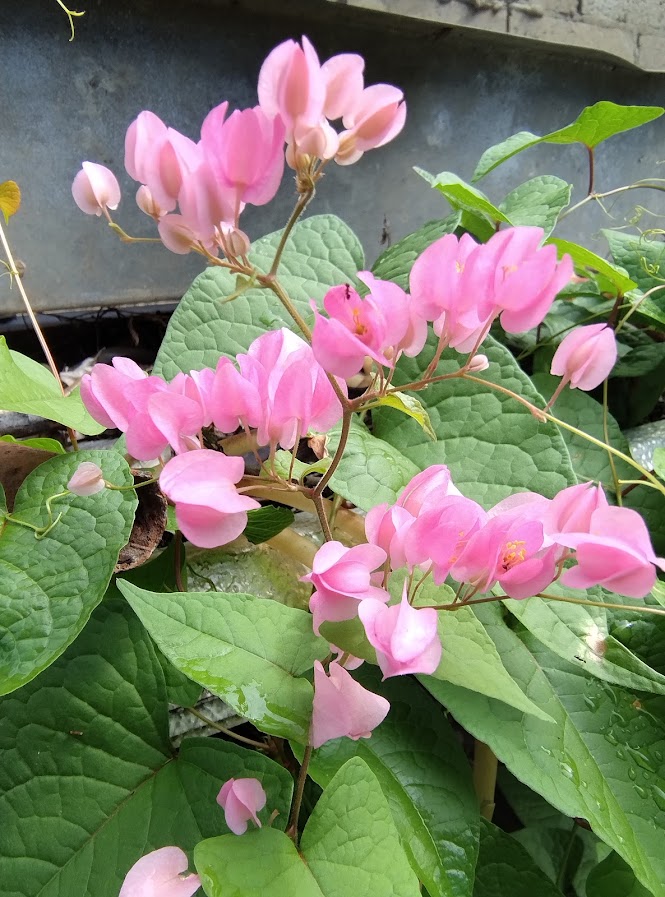
Debo decirles que esta enredadera es muy resistente y que llevo 20 años arrancándola de mi jardín y ella continúa creciendo. Pero es que resulta que sus raíces se extienden muy profundo y además tienen pequeños tubérculos, así que mientras uno de esos pequeños tubérculos esté en la tierra, ella volverá a crecer.
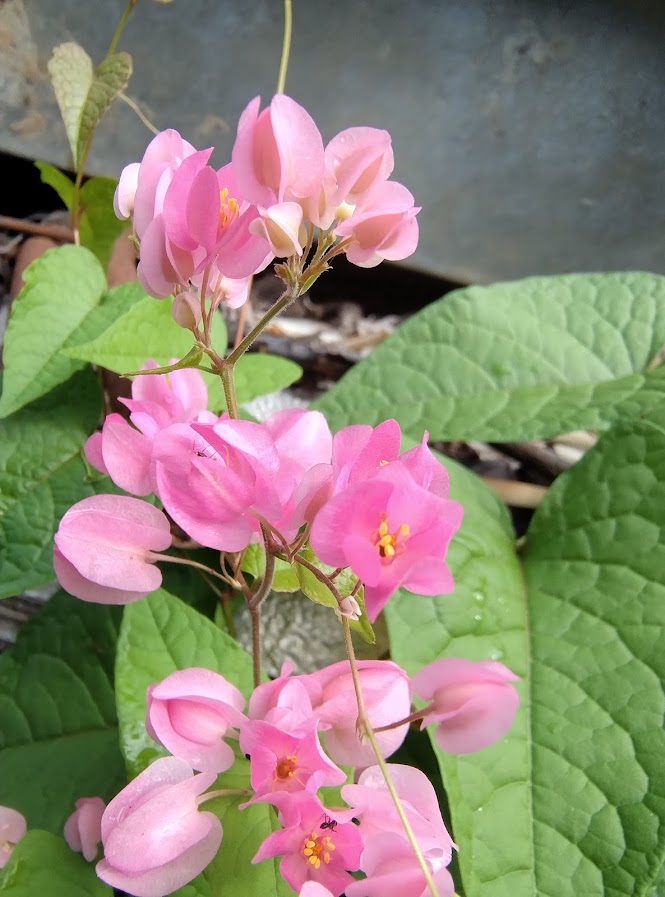
¿Es realmente una mala hierba?
En la medicina tradicional Mexicana la utilizan para tratar la fiebre, tos y dolor de garganta, además encontré referencia de que era usada como anticonceptivo y para tratar enfermedades venéreas. Aun así, la información era poca y vaga, pues no especificaba las partes de la planta que se usan o como se preparan, pero en cualquier caso no se debe experimentar con la salud y como siempre les recomiendo consultar con un especialista antes de empezar cualquier tipo de tratamiento por muy natural que sea. Recuerden que yo solo les hablo de mi experiencia para que tengan una visión más amplia de las posibilidades, pero no recomiendo ningún tratamiento, ya que cada organismo es distinto y yo no soy especialista.
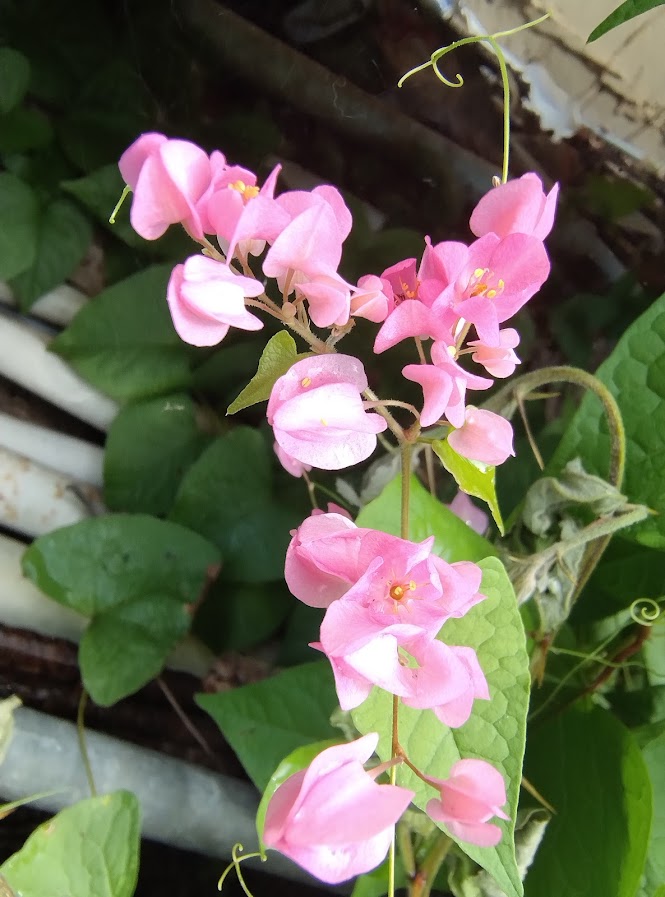
¿La seguiré eliminando de mi jardín?
Sí, porque aunque me gustan mucho sus flores, es una planta muy invasiva que asfixia a las otras cercanas, además crece muy rápido y abundante, por lo que proporciona escondite a animales y nidos de insectos; características que hacen que no me guste tenerla en casa.
Espero que les gustara esta publicación y si sienten curiosidad por las otras plantas de las que hemos hablado les dejo a continuación los links a las ediciones anteriores:
Ahora cuéntame si ya las conocías y si tú les das algún uso especial.
Todas las fotos son de mi propiedad y fueron tomadas con el teléfono Motorola Edge 30 Neo.

Returning to the publications of the weeds in my garden, the following is one of the most beautiful and also one of the most difficult to control. When my children were little and we had not yet built the house, the entire land was covered with these flowering vines, the truth is it looked really pretty and my children would go in and play in them without worrying about the insects (of course, the one who worried it was me) and they made flower crowns with it.

I never knew the name of this plant (until now), we just called it "Tinkerbell". As I found, it is native to Mexico and Central America, although I see it perfectly adapted to my location, and in Mexico they know it by various names such as "San Miguelito" and "Enredadera de San Diego", although they also know it by more names. beautiful ones like "Coral", "Rosa de Mayo" and "Corona de la Reina". Its real name is Antigonon leptopus.

I must tell you that this vine is very resistant and that I have been pulling it out of my garden for 20 years and it continues to grow. But it turns out that its roots extend very deep and they also have small tubers, so as long as one of those small tubers is in the ground, it will grow back.

Is it really a weed?
In traditional Mexican medicine they use it to treat fever, cough and sore throat, and I also found reference that it was used as a contraceptive and to treat venereal diseases. Even so, the information was little and vague, since it did not specify the parts of the plant that are used or how they are prepared, but in any case you should not experiment with your health and as always I recommend consulting with a specialist before starting any type of treatment, no matter how natural it may be. Remember that I am only telling you about my experience so that you have a broader vision of the possibilities, but I do not recommend any treatment, since each organism is different and I am not a specialist.

Will I continue eliminating it from my garden?
Yes, because although I really like its flowers, it is a very invasive plant that suffocates the others nearby, and it also grows very quickly and abundantly, which is why it provides hiding places for animals and insect nests; characteristics that make me not like having it at home.
I hope you liked this publication and if you are curious about the other plants we have talked about, below are the links to previous editions:
Now tell me if you already knew them and if you give them any special use.
All photos are my property and were taken with the Motorola Edge 30 Neo phone.
